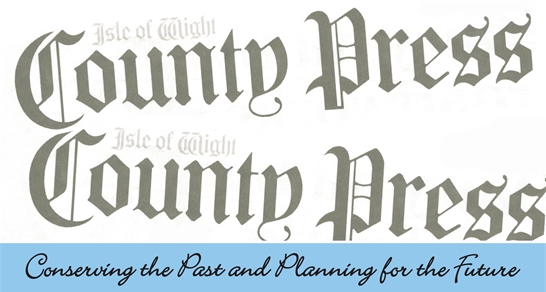February 2023
The grand manor house of the 18th century needed a grand entrance, preferably some distance away and out of sight of the house itself. Visitors received an impression that the land was greater in area than in reality.
At Appuldurcombe this was easy to achieve. The main gate, the Freemantle Gate, was near Godshill to the north of the park, and the house itself was near Wroxall to the south. The building of the present house began in 1710 by Sir Robert Worsley, but was not completed until the 1770s by his descendent Richard Worsley.
It was in the 1770s that the Freemantle gate was erected. Richard Worsley had asked “Capability” Brown to redesign the parkland around the house. The fashion of the time demanded a “serpentine” driveway meandering its way to the house, and this led from the Freemantle Gate. The name Freemantle had been in use for over two hundred years for this area of land, which included several small dwellings. These were demolished in the interest of beautifying the estate.
The Freemantle Gate is of Ionic design, a triumphal arch of classic proportions. There are fine wrought iron gates to the carriage way and two pedestrian entrances. It is a magnificent feature in the landscape, left abandoned by time. The architect is thought to have been James Wyatt, who went on to design Norris Castle in East Cowes.
The serpentine drive did not stop at the house. It continued on through the park and estate woodlands and gently climbed to the top of Stenbury Down. Here an obelisk was erected as an “eyecatcher,” another characteristic feature of parks designed by “Capabiity” Brown.

Osborne's Sovereign Gate before 1901
On the Island, another grand entrance to an estate can be seen at East Cowes. Here Prince Albert had a Royal gateway constructed to Osborne House. This was an arched entrance, incorporating lodges at either side. The building was completed in 1853, eight years after the start of the rebuilding of the house. Albert had been busy with garden improvements around the house and the Royal entrance was an afterthought.
The gates themselves have the entwined V and A insignia in the metal work, as do all the gates around the Osborne estate.
In 1854 Prince Albert had the principal drive way from the entrance Arch through the Osborne Estate planted with alternate Cedars of Lebanon and Evergreen Oaks. He also had the public road outside the gates raised up, so as to make the approach into the Arch easy for the Queen’s carriage.
In 1901 Queen Victoria left Osborne through the Royal entrance for the last time, her coffin borne on the gun carriage subsequently used for other royal funerals. 40,000 people flocked to watch the procession walk to embark on the Royal Yacht.
Today we refer to this entrance as “The Queen’s Entrance.” It is reserved for use by Royalty, although the Olympic Torch procession did pass out of the Osborne Estate beneath the Arch during its tour around the Island!
[Go Back]

